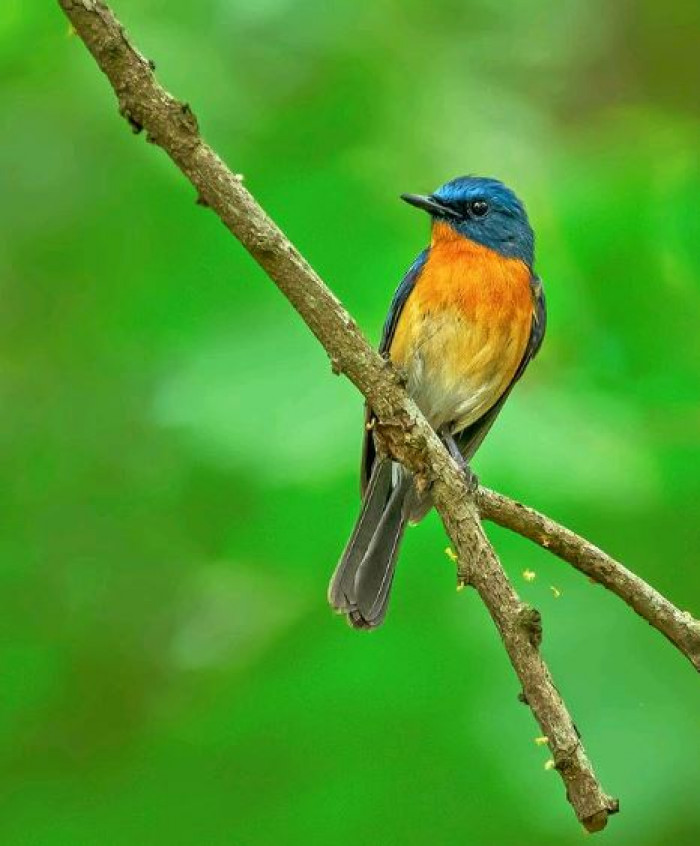Dog Owners Trade Tried And Tested Cleaning Hacks That Could Minimize Pet's Distinctive Scent And Lessen Complaints From Guests

Don't worry, the name is not misleading, it does catch flies!

When you are thinking about birds, you probably only think about pigeons or seagulls. This is especially true if you live somewhere that is bland, boring and suburban.
Sure, there are some birds about, but they are usually boring, ugly, and have likely congregated in a city or the suburbs because they know that they can steal food from bins. This means that, probably, when you see a bird, you don’t think much of it, and you move on with your day.
Unless of course, you are watching a David Attenborough documentary or some other bird program. With his narration, David Attenborough can make even pigeons seem interesting, cute, and a vital part of the ecosystem—which, of course, they are.
Basically, what all this means, is that if you live somewhere unexciting and developed, unless you are an avid bird watcher, your experience with the local birds is probably very boring. Although, if the birds were as cute, and interesting, like this one, you would probably pay a lot more attention to them!
Take this bird, the Tickell’s Blue Flycatcher, for example, it was named because it has a knack for catching bugs, it is also super cute. Check out some stunning pictures of the bird below!
The technical and scientific name for Tickell’s Blue Flycatcher is Cyornis tickelliae. It is a small passerine bird, meaning it is sparrow-shaped, and are sometimes known as songbirds or perching birds.
They are a little over 10 centimeters long, meaning they are pretty small. They have bright blue upper-parts, a red throat and breast area, which tapers down into the cream and white belly.
 Instagram/birds.nature
Instagram/birds.natureOkay, so the scientific word for baby is “juvenile” but that seems too harsh for this adorable bird! The babies’ feathers are streaked and have some cute little spots on its mantle.
 Instagram/kinlfong
Instagram/kinlfongFemale Tickell’s Blue Flycatcher looks different to the male. They are a duller shade of blue compared with the male but they don't have so much red, instead, they have a brighter blue brow, shoulder, back and tail.
 Instagram/thewild.memories
Instagram/thewild.memoriesThey live in tropical conditions, all the way from India towards Bangladesh and western Myanmar.
 Instagram/himanshu_wildlife_enthusiast
Instagram/himanshu_wildlife_enthusiastMainly, they feed by using their quick reflexes to snag up insects as they fly around. When this doesn’t work, they also jump down to the ground and grab up insects (like termites and earwigs).
 Shantanu Kuveskar / CC BY-SA 4.0
Shantanu Kuveskar / CC BY-SA 4.0Due to humans moving closer and closer to their natural habitats, they have also been observed checking out bins and other garbage dumps looking for snacks!
 Instagram/insta.praj
Instagram/insta.prajTheir favorite location is in a hole lined with fine grasses and fibers, or in amongst rocks. They lay 3-5 eggs, and they are incubated by both parents for almost two weeks.
They have a bigger appetite during mating season, and they take larger prey during this time.
 Instagtram/afonsofarias
Instagtram/afonsofariasParenting is pretty equal for the beautiful birds! They are cared for by both their mother and fathers, and they fledge for 10-11 days after hatching, but their parents feed them for another week.
 Instagram/prab_chikhalkar_photography
Instagram/prab_chikhalkar_photographyCheck out their beautiful sounds below!
The Tickell’s Blue Flycatcher is super cute, isn’t it? The best part, I think, is that parenting is basically equal between the mother’s and the father’s—which is something humans could take notes from!
The nature photographers featured have done some incredible work in taking stunning pictures of the birds, and they really know how to bring out all the vibrant colors of this extraordinarily spectacular bird.
What did you think about Tickell’s Blue Flycatcher bird? Had you heard about it before, or was this the first time you have experienced its glory?
Tell us all your thoughts in the comments below!
H/T: OneBirdCage.





